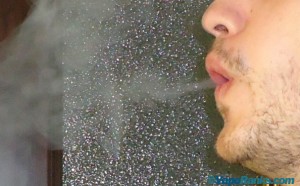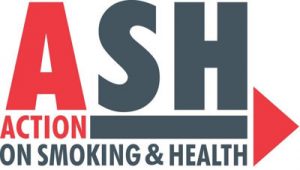Norwegian Report on Passive Vaping Gets Blown Out of Proportion by the Media
The Norwegian Institute of Public Health (NIPH) recently released a report on health risks associated with e-cigarette use, which, although sensible, served as nothing more than ammunition for the media’s ongoing campaign against vaping.
 The 100-page report focuses a lot on the risked posed by nicotine, especially to bystanders, and soon after it was published Norwegian media was flooded with articles on how passive vaping poses significant health risks to bystanders, hinting that electronic cigarettes are just as dangerous to the general public as tobacco cigarettes. It wasn’t long before English news sites followed suit, publishing the very same scaremongering junk.
The 100-page report focuses a lot on the risked posed by nicotine, especially to bystanders, and soon after it was published Norwegian media was flooded with articles on how passive vaping poses significant health risks to bystanders, hinting that electronic cigarettes are just as dangerous to the general public as tobacco cigarettes. It wasn’t long before English news sites followed suit, publishing the very same scaremongering junk.
While the NIPH review concludes that e-cigarettes are not without risk, it also confirms that using them is significantly less dangerous than smoking and that they could have a very positive effect on public health. The only real issues it presented were the presence of nicotine in exhaled vapor and the fact that we don’t know what the long term effect of using them are on the human body.
And, obviously, the negative bits were exactly what mainstream news sites decided to focus on, using scary headlines like “Passive Smoking Warning as E-Cigarettes Are Found to Harm Bystanders“, “E-Cigarettes Are as Harmful as Cigarettes, a Study Claims” or “E-Cigarettes Could Poison Bystander, Study Finds“. This is a perfect example of how the media can put a spin on anything and virtually brainwash the public. How many news readers do you think will actually check the 100-page report, considering most of these articles don’t even link to the original source?
For the sake of argument, let’s focus on the issue of nicotine in exhaled e-cig vapor. The NIPH bases this claim, in part, on a study that found that people who live in smokers homes and e-cigarette users homes are exposed to statistically similar amounts of nicotine. Assuming this is true, there is still little to be concerned about, as Dr. Konstantinos Farsalinos demonstrates on his website E-Cigarette Research. Using simple math, he shows that “passive vapers” absorb 10 times less nicotine than what The European Food Safety Authority say will affect an average human weighing 75 kg. “Such levels are not only harmless but have absolutely no biological effect, even according to the strictest regulatory definitions,” the Greek doctor notes.
But it just so happens that the study quoted in the Norwegian Institute of Public Health concluded that airborne nicotine in homes with smokers were 5.7 times higher than in e-cig homes and that only cotinine levels were similar. There is also a more recent study comparing nicotine residues in the homes of smokers and e-cigarette users which concluded that nicotine concentration was hundreds of times lower in the homes of vapers.
Following the media frenzy after the release of the NIPH report, one of Norway’s most important television channels, TV2, invited both Dr. Camilla Stoltenberg, head of the Norwegian Institute of Public Health, and Dr. Karl Erik Lund, head of research at SIRUS (Norwegian Institute for Alcohol and Drug Research) to shed some light on this subject. The whole interview is in Norwegian, but, thanks to the efforts of The Vaping Giraffe, we have a translation of their most important statements:
Host: … our reporter talked to this woman who is very satisfied with her vaping. The question is: When she sits there vaping, is my colleague, Johannes, exposed to a form of passive smoking?
Stoltenberg: First of all I’d like to say that I totally agree with her that vaping is less dangerous than smoking and that it is much better that people that smoke switch to vaping. This is an important part of this picture. But when it comes to passive vaping, the point in the report is that passive vaping exists, and that one exposes the surroundings to levels of nicotine that in some cases might be comparable to those from passive tobacco smoking and quite a few other substances that it is difficult to say anything about the effects of in the long term. And it is in fact difficult to say anything about the effects of vaping in the long term because we don’t have many studies on this.
Host: But how dangerous is it?
Stoltenberg: It is not very dangerous, because we are talking about low levels [of these substances], so if you compare it to tobacco smoking and passive tobacco smoking it is less dangerous. Our point is that it is not risk free, and we don’t know enough about it.
Karl Eric Lund then steps in and agrees that electronic cigarettes are not risk free, noting that no one has ever claimed such a thing. Regarding the NIPH report, he explains that the problem is how it was presented by the media:
Lund: It is not the nicotine that is the dangerous substance in passive smoking for the bystanders, it is the nitrosamines, it’s the monoxide, it’s the metals and we don’t have any of these in passive vaping...
Host: … but there is nicotine?
Lund: There is nicotine, but the levels are so low that they are 10 times lower than what the The European Food Safety Authority (EFSA) has defined as a health risk, so focusing on that we can compare the nicotine exposure from these two products is a derailment of the debate about how to regulate these products…
After this Stoltenberg admits that even though they have focused on nicotine there are great uncertainties when it comes to how significant this is, the Vaping Giraffe notes. Even though she continued to claim that we don’t know enough about electronic cigarettes, Lund contradicts her, explaining that we actually do know a lot and we need regulation that encourages smokers to switch to a safer product that also the NIPH now say exists.
The interview does a great job of explaining just how serious the health risks presented in this report really are, but as the Vaping Giraffe points out, the battle for electronic cigarettes is being fought in the media, based on exaggerated or blatantly false claims, instead of scientific studies. Unfortunately, it is becoming clearer every day that this is a battle we are losing.
















